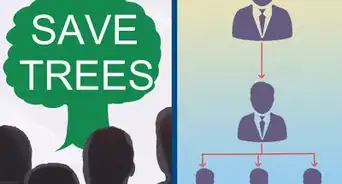wikiHow is a “wiki,” similar to Wikipedia, which means that many of our articles are co-written by multiple authors. To create this article, volunteer authors worked to edit and improve it over time.
wikiHow marks an article as reader-approved once it receives enough positive feedback. In this case, 91% of readers who voted found the article helpful, earning it our reader-approved status.
This article has been viewed 47,759 times.
Learn more...
An advocacy group consists of individuals who gather to discuss, explore, promote and/or lobby for a particular cause. Homelessness, disabilities, environmental concerns and child abuse are just a few examples of issues that motivate people in search of a solution to form an advocacy group. Such groups may be initiated by 1 or 2 people or entire organizations. Here are the steps for starting an advocacy group.
Steps
-
1Identify your cause and reason for creating the group. An advocacy group or self-help group for people with disabilities might gather to provide support for its members and increase societal awareness about relevant issues. A group devoted to assisting the homeless may gather to brainstorm ways to generate resources and assistance. Be specific about the cause and your objective.
-
2Conduct research to determine if similar organizations already exist. An online search for the presence of a cause-specific advocacy group in your geographic location will help you to locate the names, contact information and scope of already existing organizations.
- Contact local organizations to learn more. Speak to administrators of existing advocacy groups to find out if they are already performing the work you intend to do. You might decide to join their efforts or fulfill a need not met by their activities.
Advertisement -
3Find fellow organizers. Speak to your social network, professional colleagues, community leaders and others who are interested in helping you organize advocacy group activities.
-
4Contact interested groups, individuals or organizations to find group attendees. If you are interested in improving the nutrition of school lunches, for example, reach out to other parents who want the same for their kids.
-
5Decide on a meeting location. Contact community centers, libraries, churches and other organizations that might offer a free meeting spot. Remove all obstacles to meeting attendance by choosing a location that is centrally located and easily accessible with ample parking.
-
6Choose a convenient meeting time. Take into account the schedules of your attendees. If you are targeting mothers of young children, for example, you might schedule your meetings while their children are in school.
-
7Prepare informative materials to distribute in your meetings. Provide advocacy group members with a written description of the vision and objective of your group, along with handouts to further increase their knowledge about relevant issues.
- Use technology to contact members and distribute information. Create a website for your advocacy group and email monthly newsletters to members.
-
8Increase group membership by attending conferences and other events. Speak at events sponsored by like-minded organizations to generate interest in your group. Announce your meeting date and location at such events.
-
9Explore funding options to cover any start-up costs.
- Approach political officials in your jurisdiction. Inquire about available funds or legislation to increase funding for your specific cause.
- Research private funding options. Contact private funding agencies to ask for funds or fundraising ideas.
-
10Organize a day-long event. Expand your reach socially and politically by sponsoring a day-long conference.
- Ask advocacy group supporters to spread the word about the event. Create fliers for group members to distribute around town and email to interested people.
- Invite speakers and legislators to attend. Informative and inspirational talks by speakers who are intimately familiar with your cause will motivate others and increase awareness. Also contact the office of local politicians and legislators to invite them or their representatives to your event.
Community Q&A
-
QuestionDo we need to write by-laws?
 Community AnswerYes. Without by-laws or guidelines, those who advocate have no boundaries, and can wreak havoc on many without knowledge or facts about the group or cause with which they are advocating.
Community AnswerYes. Without by-laws or guidelines, those who advocate have no boundaries, and can wreak havoc on many without knowledge or facts about the group or cause with which they are advocating. -
QuestionDo we need to have a non-profit or charity license to do this, especially if we are getting funding? You missed the registration and licensing formalities.
 Community AnswerNo. An Advocacy Group generally is a radical viewpoint on humanitarian non-profits; i.e. Green Peace. Many do not give ascertainment of information when coming up with statements to advocate their cause. Factual and clearly stating where information is coming from lends more credibility.
Community AnswerNo. An Advocacy Group generally is a radical viewpoint on humanitarian non-profits; i.e. Green Peace. Many do not give ascertainment of information when coming up with statements to advocate their cause. Factual and clearly stating where information is coming from lends more credibility.







































































